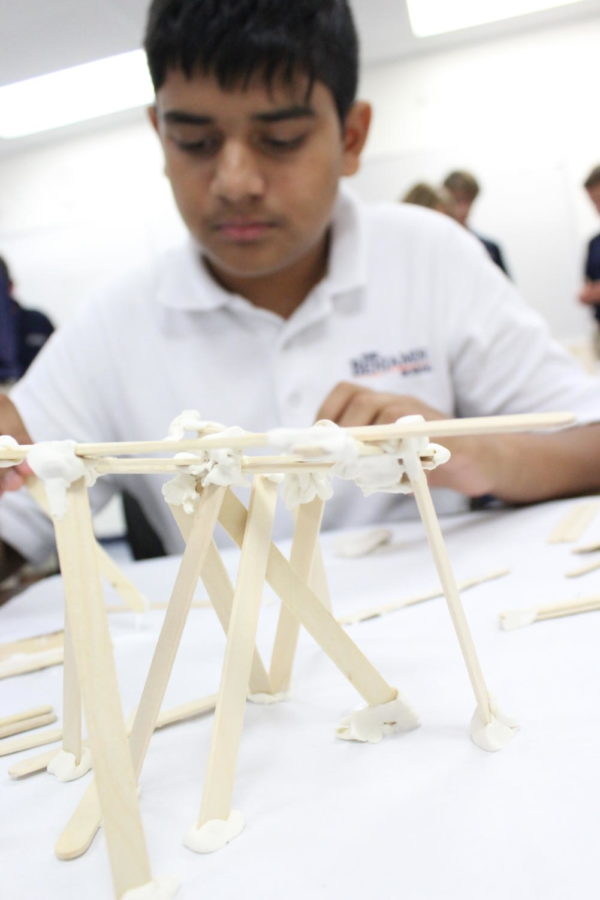Students Put Themselves in Ancient Peoples’ Shoes
Long ago in history, several civilizations (i.e. Sumerians, Assyrians, Babylonians, etc.) that lived in ancient Mesopotamia (what is now Western Asia) created temples called “ziggurats.” Made from stone, these structures were often rectangular-stepped towers that sometimes featured a temple at the top. They were built for safety – so ancient priests and other important members of society could avoid flood waters, and for religious purposes – so the priests could sacrifice animals and food to the gods for good crops and for a good harvest.
In studying ancient Mesopotamia, the eighth-grade history students, taught by Mrs. Anne Franzen, attempted to build their own ziggurats with glue and popsicle sticks. The caveat: the structures needed to include a marble run that would take a marble from the top level of the ziggurat to the bottom.
“I wanted the students to build a ziggurat to [give them a sense] of how hard it was to build an [actual] ziggurat and to have them learn more about them,” said Franzen. “In teaching the students about Mesopotamia, I thought it would be fun to build [a ziggurat] with household materials.”
Although it was a great experience, the project wasn’t as successful as originally planned. “We could barely put two walls together, but if we had more time maybe on a block [class] we could have probably finished,” said eighth-grader Hailey Ende.
Mrs. Franzen echoed those sentiments.
“The Ziggurats were not very successful since they should have done them during a block so that they could have more time,” she said.
However, this didn’t stop the students from enjoying the experience.
“Even though I did not finish, and it was hard, I like classes which are hands-on, so I think it was fun,” said eighth-grader Owen Nutter.





